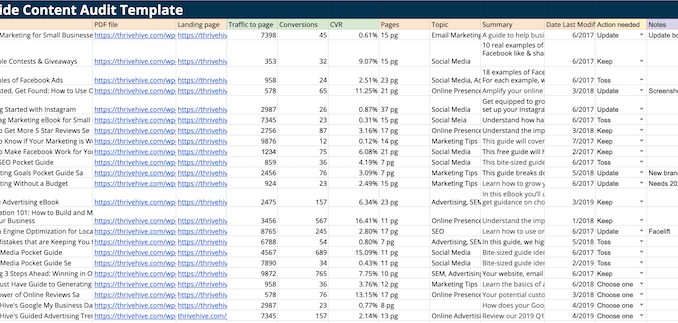
When it comes to optimizing your website for search engines, one of the most important tasks you can undertake is a content audit. A content audit involves reviewing all the content on your website to ensure it is high quality, relevant, and optimized for SEO. In this article, we will discuss how to conduct a content audit for better SEO results.
1. Define Your Goals
Before you begin your content audit, it is essential to define what you hope to achieve. Are you looking to improve your search engine rankings, increase organic traffic, or boost conversion rates? By setting clear goals, you can tailor your content audit to focus on areas that will have the most significant impact on your objectives.
2. Inventory Your Content
The next step in conducting a content audit is to create an inventory of all the content on your website. This includes blog posts, landing pages, product descriptions, and any other written material. Organize this content into a spreadsheet or document, including information such as the URL, page title, and publication date.
3. Assess Content Quality
Once you have compiled an inventory of your content, it is time to assess the quality of each piece. Look for spelling and grammar errors, outdated information, and inconsistencies in tone and voice. Evaluate whether each piece of content is well-written, engaging, and relevant to your target audience.
4. Evaluate SEO Performance
In addition to content quality, it is crucial to evaluate the SEO performance of each piece of content. Review key metrics such as keyword density, meta tags, internal and external links, and page load speed. Identify opportunities to improve on-page SEO elements to boost your search engine rankings.
5. Identify Gaps and Opportunities
After assessing the quality and SEO performance of your content, take note of any gaps or missed opportunities. Are there topics that are not covered on your website? Are there high-performing keywords that you are not targeting? Use this information to develop a content strategy that fills in these gaps and capitalizes on new opportunities.
6. Develop an Action Plan
Based on the findings of your content audit, develop an action plan to address any issues and capitalize on opportunities. Prioritize tasks based on their potential impact on your SEO goals and create a timeline for implementation. This plan should include updating, optimizing, and creating new content to align with your SEO strategy.
7. Monitor and Measure Results
Once you have implemented your action plan, it is essential to monitor and measure the results of your content audit. Use tools like Google Analytics and Google Search Console to track changes in organic traffic, search engine rankings, and engagement metrics. Continuously assess the impact of your content audit on your SEO performance and adjust your strategy as needed.
Conclusion
Conducting a content audit is a critical step in optimizing your website for search engines and improving your SEO performance. By defining your goals, assessing content quality, evaluating SEO performance, and developing an action plan, you can identify areas for improvement and capitalize on opportunities to boost your search engine rankings. Keep monitoring and measuring the results of your content audit to ensure that your SEO strategy continues to drive success.
Ready to take your website to the next level with a comprehensive content audit? Contact us today to learn how our team of experts can help you achieve your SEO goals.
